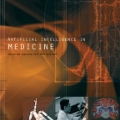Aim: This research proposes the first solely sociodemographic measure of digital accessibility for Great Britain. Digital inaccessibility affects circa 10 million people who are unable to access or make full use of the internet, particularly impacting the disadvantaged in society. Method: A geodemographic classification is developed, analysing literature-guided sociodemographic variables at the district level. Analysis: Resultant clusters are analysed against their sociodemographic variables and spatial extent. Findings suggest three at-risk clusters exist, "Metropolitan Minority Struggle", "Indian Metropolitan Living" and "Pakistani-Bangladeshi Inequality". These are validated through nationwide Ofcom telecommunications performance data and specific case studies using Office for National Statistics internet usage data. Conclusion: Using solely contemporary and open-source sociodemographic variables, this paper enhances previous digital accessibility research. The identification of digitally inaccessible areas allows focussed local and national government resource and policy targeting, particularly important as a key data source and methodology post-2021, following the expected final nationwide census.
翻译:这项研究提出了英国第一个唯一的数字无障碍社会人口计量标准。数字无法获得性能影响约1 000万无法接入或充分利用互联网的人,尤其影响社会弱势群体。方法:制定地理人口分类,分析地区一级的文献指导社会人口变量。分析:根据社会人口变量和空间范围分析结果组群。调查结果显示,存在三个风险组群,即“都市少数民族斗争”、“印度都市生活”和“巴基斯坦-孟加拉国不平等”。这些组群通过全国电信业绩数据和利用国家统计局因特网使用数据进行的具体案例研究得到验证。结论:仅利用现代和公开来源的社会人口变量,本文加强了先前的数字无障碍研究。通过确定数字无障碍区,可以集中地方和国家政府的资源和政策目标,特别是作为预期的全国人口普查之后的关键数据来源和方法。



